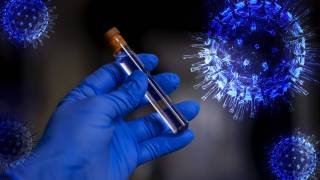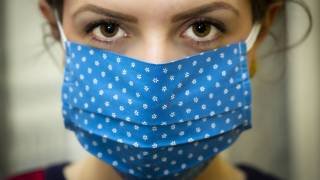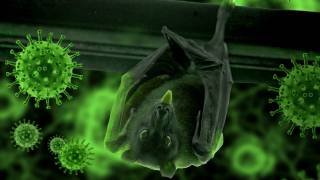6-Steps To Crush the COVID-19 Curve

A new editorial published in The New England Journal of Medicine (NEJM) says ‘The aim is not to flatten the curve; the goal is to crush the curve.’
‘We can do it across this country (USA) in 10 weeks’ said Harvey V. Fineberg, M.D., Ph.D., from the Gordon and Betty Moore Foundation, on April 1, 2020.
Excerpts from his editorial are inserted below:
‘And with enough intelligence about the enemy — where the virus lurks, how quickly it is moving, where it is most threatening, and what its vulnerabilities are — we can begin to re-energize the economy without putting additional lives at risk.’
If we take these six steps to mobilize and organize the nation, we can defeat Covid-19 by early June 2020:
1. Establish a unified command. The President should surprise his critics and appoint a commander who reports directly to the President. This person must have the President’s full confidence and must earn the confidence of the American people. This is not a coordinator across agencies. This commander carries the full power and authority of the American President to mobilize every civilian and military asset needed to win the war. Ask every governor to appoint an individual state commander with similar statewide authority. The diversity of our nation and the various stages of the epidemic in different regions allows us to target responses to specific places and times, deploy and redeploy limited national supplies where they can do the most good, and learn from experience as we go.
2. Make millions of diagnostic tests available. Not everyone needs to be tested, but everyone with symptoms does. The nation needs to gear up to perform millions of diagnostic tests in the next 2 weeks. This was key to success in South Korea. Every decision about managing cases depends on sound medical evaluation and the results of diagnostic tests. Without diagnostic tests, we cannot trace the scope of the outbreak. Use creative ways to mobilize the nation’s research laboratories to assist with population screening; refer persons who screen positive for further evaluation. Organize dedicated clinical test sites in every community that are physically apart from other care centers, such as the drive-through test centers that have begun to spring up.
3. Supply health workers with PPE and equip hospitals to care for a surge in severely ill patients. Ample supplies of PPE (personal protective equipment) should be standard issue to every U.S. health worker who is in the front lines caring for patients and testing for infection. We wouldn’t send soldiers into battle without ballistic vests; health workers on the front lines of this war deserve no less. Regional distribution centers should rapidly deploy ventilators and other needed equipment from the national stockpile to hospitals with the greatest need. Despite everyone’s best efforts, in areas hardest hit, crisis standards of care will need to be put into effect to make ethically sound, unavoidable decisions about the use of available equipment and supplies.
4. Differentiate the population into five groups and treat accordingly. We first need to know who is infected; second, who is presumed to be infected (i.e., persons with signs and symptoms consistent with infection who initially test negative); third, who has been exposed; fourth, who is not known to have been exposed or infected; and fifth, who has recovered from infection and is adequately immune. We should act on the basis of symptoms, examinations, tests (currently, polymerase-chain-reaction assays to detect viral RNA), and exposures to identify those who belong in each of the first four groups. Hospitalize those with severe disease or at high risk. Establish infirmaries by utilizing empty convention centers, for example, to care for those with mild or moderate disease and at low risk; an isolation infirmary for all patients will decrease transmission to family members. Convert now-empty hotels into quarantine centers to house those who have been exposed, and separate them from the general population for 2 weeks; this kind of quarantine will remain practical until and unless the epidemic has exploded in a particular city or region. Being able to identify the fifth group — those who were previously infected, have recovered, and are adequately immune — requires development, validation, and deployment of antibody-based tests. This would be a game-changer in restarting parts of the economy more quickly and safely.
5. Inspire and mobilize the public. In this all-out effort, everyone has a part to play and virtually everyone is willing. We have begun to unleash American ingenuity in creating new treatments and a vaccine, providing a greater variety and number of diagnostic tests, and using the power of information technology, social media, artificial intelligence, and high-speed computing to devise novel solutions. These efforts should be intensified. Everyone can help reduce the risk of exposure and support their friends and neighbors in this critical time. After all health workers have the masks they need, the U.S. Postal Service and willing private companies can join to deliver surgical masks and hand sanitizer to every American household. If everyone wears a surgical mask outside the home, those who are presymptomatic and infected will be less likely to spread the infection to others. And if everyone wears a mask, no stigma is attached.
6. Learn while doing through real-time, fundamental research. Clinical care would be vastly improved by effective antiviral treatment, and every plausible avenue should be investigated. We did it with HIV; now, we need to do it faster with SARS-CoV-2. Clinicians need better predictors of which patient’s condition is prone to deteriorate rapidly or who may go on to die. Decisions to shape the public health response and to restart the economy should be guided by science. If we learn how many people have been infected and whether they are now immune, we may determine it’s safe for them to return to their jobs and resume more normal activities. Is it safe for others to return to work? That depends on the level of infection still ongoing, on the nature of possible exposures in the workplace, and on reliable screening and rapid detection of new cases. Can schools safely reopen? That depends on what we learn about children as transmitters of the virus to their teachers, parents, and grandparents. How dangerous are contaminated spaces and surfaces? That depends on the survival of virus under different environmental conditions and on various materials.
If we take this concerted and determined approach and are guided by science, we will have positioned the economy to come roaring back — once the virus is out of the picture.
While we strive to overcome the immediate epidemic, we should take steps to be better equipped to deal with the coronavirus over time and with other emerging threats in the 21st century’ summarized Dr. Fineberg.
SARS-CoV-2 pandemic news published by Coronavirus Today.









.jpg)

.jpg)



.jpg)







.jpg)

